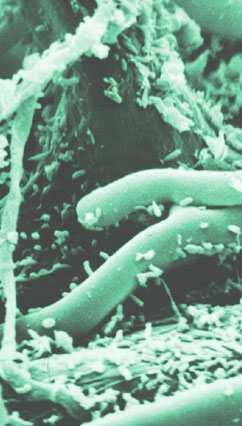Soil seen as health driver
 Experts are calling for the inclusion of soil microbiomes in the World Health Organisation’s (WHO) One Health policy, to help address the policy’s goals.
Experts are calling for the inclusion of soil microbiomes in the World Health Organisation’s (WHO) One Health policy, to help address the policy’s goals.
The WHO One Health policy and philosophy is a comprehensive approach that recognises the interconnectedness of human health, animal health, and the health of the environment.
It emphasises the need for collaboration and cooperation across sectors to address health challenges at the human-animal-environment interface.
In a new article, Professor Brajesh Singh from Western Sydney University’s Hawkesbury Institute for the Environment gathers available data to highlight the need for an integrated science-policy-society interface that explicitly considers soil health and microbiomes.
Professor Singh says the explicit inclusion of soil health and its microbiomes are a vital step to deliver on the policy to ensure cost effective and environmentally sustainable approaches are used for the management of One Health issues.
“The suggested holistic approach could offer preventive and mitigating measures to combat potential threats that the policy aims to address such as infectious diseases, antimicrobial resistance and climate change,” Professor Singh says.
“The effective management of human health demands the best possible knowledge to support policy action at all scales.
“A more integrated and well-resourced landscape of researchers, acting as a knowledge hub, is needed to ensure soil health and microbiomes are explicitly considered as an important component in the broader implementation of the One Health approach.”
Soil functions, carried out by soil microbiomes, underpin human, animal and plant health including food and water security and the mitigation of climate change impacts.
“Soil impacts planetary health in many ways including through the creation of healthy habitats, supporting human and animal immune systems and acting as an interface between air and water directly influencing environmental quality, a key pillar of the One Health approach,” said Professor Singh.
“The ability to assess, predict and develop risk mitigation strategies for soil-borne pathogens and pollutants is essential to ensure that the stakeholders involved deploy resources and actions towards this fundamental component.”
Within an ecosystem, human, animal and environmental health is interconnected by microbial loops for the exchange of resources, chemicals, beneficial microorganisms and pathogens.
“Evidence suggests that interactions between human pathogens and soil or host microbiomes impact disease outbreaks and severity,” said Professor Singh.
The article outlines a five-step roadmap for inclusion of soil microbiomes in the policy to improve its overall impact.
-
Establishment of a knowledge hub network comprising existing science-policy-society interfaces.
-
Soil microbiome data integration, storage and sharing.
-
Periodic assessments, forecasting and recommendations.
-
Effective engagement of stakeholders.
-
Reorganisation of the current system.
The available data reveals the provision of safe and high quality food relies on the functions of soil to remove mycotoxins and pathogens that can lead to infections such as E.coli and Salmonella.
The data also suggests that soil microbiomes play a critical role in the removal of chemical residues, mitigating the broader impact of pesticides and other pollutants.
The full article is accessible here.








 Print
Print